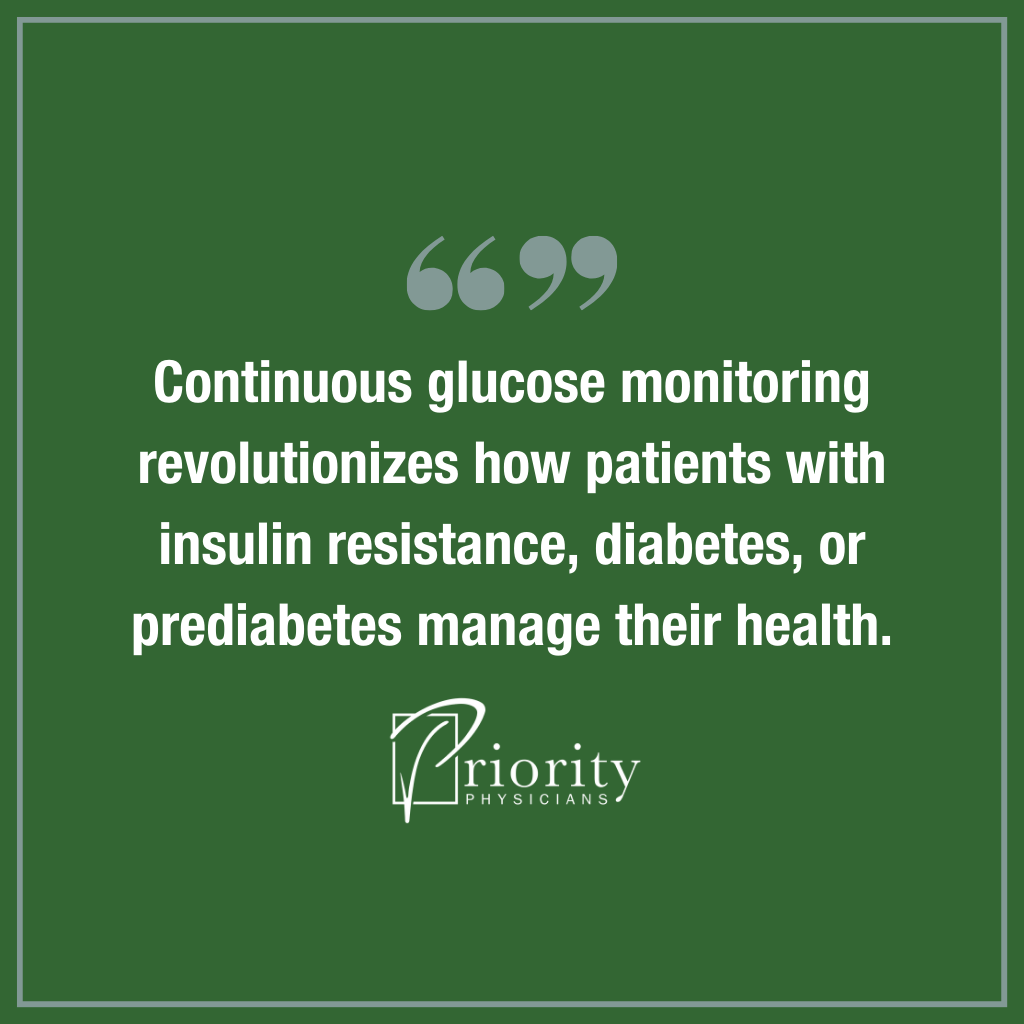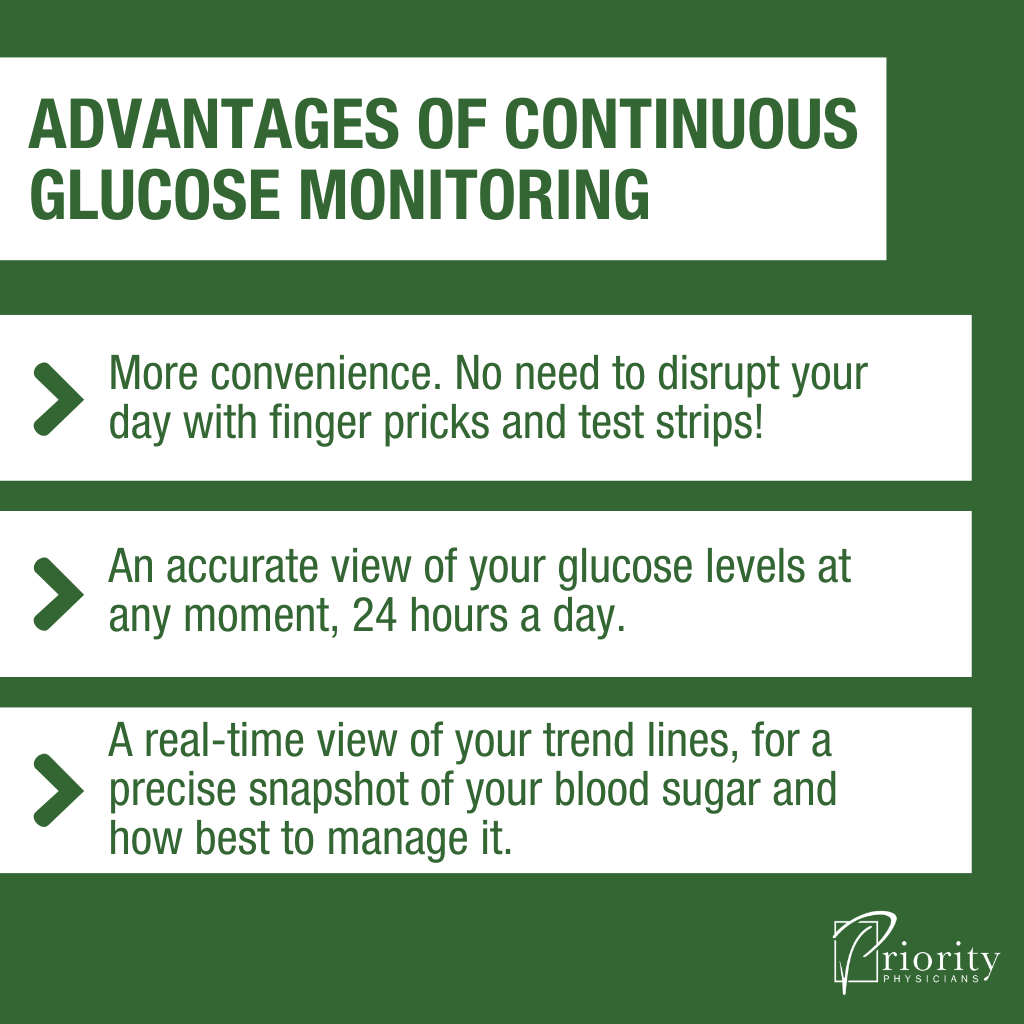Several times a day, many people with diabetes use a fingerstick to prick their fingertip, draw a drop of blood, and apply it to a test strip. The strip’s results help them critically monitor their blood sugar levels. But fingersticks are painful, and on a hectic day, repeated blood sampling can become an awkward interruption.
Now, many diabetic patients are scrapping fingersticks in favor of continuous glucose monitoring (CGM) — a precise method that tracks their blood sugar all day, even while they sleep.
How does CGM work? Let’s explore.
How Does CGM Work?
CGM is wearable technology available by prescription.
A small electrode at the tip of the CGM device is inserted beneath the skin of the patient’s arm or abdomen. Unlike fingersticks, which use capillary blood, the tiny CGM sensor measures glucose in the fluid under the skin.
When glucose interacts with the sensor tip, it generates an electrical signal proportional to the amount of blood sugar detected. The signal sends data to the patient’s smartphone or smartwatch, delivering accurate, real-time readings of their glucose levels every few minutes.
Because the CGM tracker is hands-free and provides continuous updates, it’s less disruptive to an active lifestyle than periodic finger pricks.

Smarter Control Over Blood Sugar
CGM revolutionizes how patients with insulin resistance, diabetes, or prediabetes — or even people with a predisposition or family history — manage their health.
Patients who wear the glucose monitor feel in control of their health. As they monitor changes in their blood glucose, they learn how their blood sugar is affected by:
- Different foods
- Sleep patterns
- Stress levels
- Forms of exercise
With the data from a CGM, patients are better informed to plan their meals, modify activities and behaviors, or adopt other lifestyle changes that improve their blood sugar levels.
We doctors, too, find CGM data to be a valuable aid to reduce our patients’ short- and long-term risks. When we’re well-armed to help you control your blood sugar levels, high glucose is less likely to cause complications within your body.
Freedom From Fingersticks
The traditional fingerstick method captures your blood glucose level at a single point in time. That data is helpful, but it’s incomplete. Fingersticks don’t provide immediate, useful information about the direction of blood sugar levels or their rate of change.
CGM, on the other hand, delivers a continuous data stream, tracking trends and patterns over time.
For example, I have a 70-year-old patient with type 2 diabetes who’s well-versed in fingerstick monitoring but wanted a better option. She’s interested in how her blood glucose looks before meals and how her meals affect it — both right after eating and several hours later. CGM gives her the continuous trend view she wants.
CGMs are relatively user-friendly. They require minor calibration before use, and they work best paired with a smartphone.
Both fingersticks and CGMs come at a regular monthly expense. Although they’re both covered by most insurance plans, CGMs may have a higher deductible and be a bit more expensive.

How Does CGM Work? More Information
If you choose to invest in a CGM, it can offer:
- More convenience. No need to disrupt your day with finger pricks and test strips!
- An accurate view of your glucose levels at any moment, 24 hours a day.
- A real-time view of your trend lines, for a precise snapshot of your blood sugar and how best to manage it.
If you need to monitor your glucose levels — or you’re still wondering, “how does CGM work?” — your Priority Physicians can help.
Reach out to our team, and let’s discuss!

